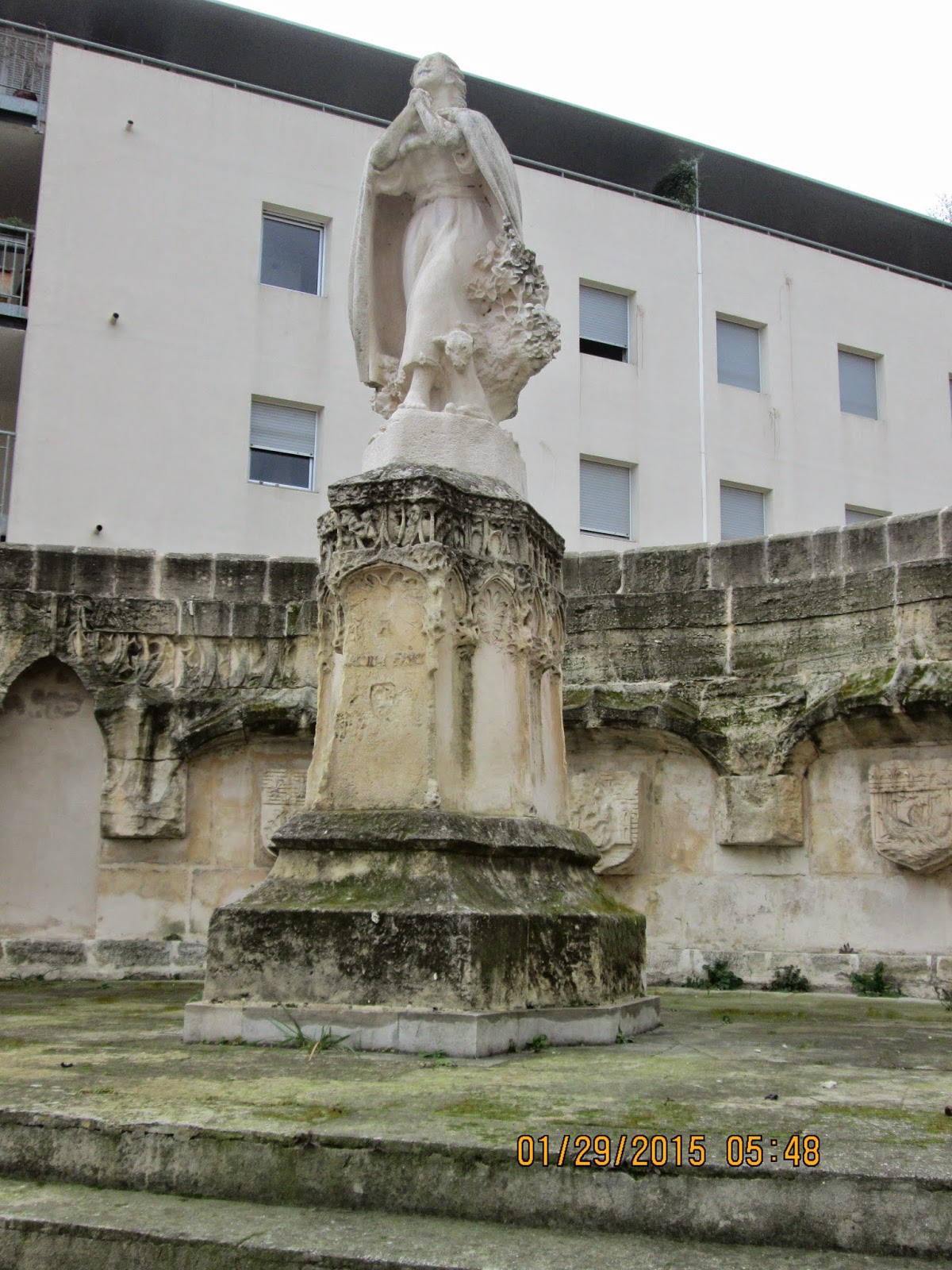I made a big mistake today. I thought the train trip from Montpelier to Paris would be a one-beer trip. It turned out to be a two-beer trip, so I had to buy the second beer in the train's dining car, which cost me 5 euros! That's about $5.65 US. Believe me, I won't make that mistake again.
On the way to the train station, I stopped in McDonald's for a cup of coffee. It's only one euro in McDonald's, which cheaper than just about anywhere else. But as you can see in the photo, it's a tiny cup of coffee. It's very delicious, however.
(By the way, if you've noticed that I'm wearing the same green sweatshirt in every photo, you might be asking yourself if I wear the same shirt every day. Yes, I do! It does get washed, however, and I usually only pull it on over by T-shirt when I'm going outside. I don't think it smells too bad, but I do notice that in the pictures I am almost always alone.)
On the way to the train station, I stopped in McDonald's for a cup of coffee. It's only one euro in McDonald's, which cheaper than just about anywhere else. But as you can see in the photo, it's a tiny cup of coffee. It's very delicious, however.
(By the way, if you've noticed that I'm wearing the same green sweatshirt in every photo, you might be asking yourself if I wear the same shirt every day. Yes, I do! It does get washed, however, and I usually only pull it on over by T-shirt when I'm going outside. I don't think it smells too bad, but I do notice that in the pictures I am almost always alone.)
 |
| Enjoying a cup of coffee at McDonald's |
Below is a close-up of the coffee cup. The French on the cup translates as "freshly ground." Generally, when you get a cup of coffee in France, the beans are ground after you place your order, and then hot water is forced through the grounds. In other words, each cup of coffee is made individually starting with the roasted coffee beans. You can't get a fresher cup of coffee than that. If you buy a cup of coffee in one of the fancier McDonald's that has a separate McCoffee counter, you pay 1.20 euros, and you get your coffee in a tiny china cup. That doesn't seem to make it taste any better, however.
 |
| McDonald's coffee from freshly ground coffee beans |
Many people who read this blog are in Europe, and I don't have to explain to you how good European coffee can be. Some people's idea of a good cup of coffee, however, is that mass-brewed stuff that they sell at StarBucks.
Also on the way to the station in Montpelier, I snapped the following picture of a protestant church, or more accurately, a protestant temple. In France, Catholics have churches and Protestants have temples. Of course, Jews have synagogs (or synagogues if you have a hang-up in favor of archaic spelling), and Muslims have mosques.
 |
| A Protestant Temple near the Montpelier train station |
I like the fact that the Montpelier train station doesn't have the horrible yuppie rock music playing over the loudspeakers that you hear in almost every store and coffee shop in most of the world these days. Instead, there is a piano, and anyone who wants to may sit down at it and play. The young man who was playing when I snapped this picture seemed very talented. Others play not so well, but even a poor musician playing on a real piano sounds better than piped-in, low-brow crappo. Oh the big red box on the right of the picture is a ticket machine.
Below is a picture of a French high-speed train that I shot from another platform while waiting for my train. They are called TGVs, which stands for Trains de Grande Vitesse. That literally translates as "trains of great speed." The train I took looked similar except my train was a double-decker, and my seat was on the upper deck.
 |
| A traveler playing the free piano in the train station |
 |
| A French TGV or high-speed train |
On a test run, one of these trains attained a speed of 575 kilometers per hour or 357 miles per hour. On normal runs, trains can hit speeds of 322 kilometers or 200 miles per hour, although most of them travel a bit more slowly than that, say around 150 miles per hour.
In the first part of the trip, I had four seats to myself. Behind the facing seat sat a woman who... let's say she occupied more than her fair share of space. She had a poor little dog with her, which was a bit cramped for room, so it crept under the seat and came over to ride with me. You can see the pleading look in the dog's eyes. "Please don't send me back to squeeze in next to that fat woman!" Oh, the other object in the picture is my right leg. No! No! The dog didn't do what you're thinking, although it does looks as if it's considering such a move.
 |
| A dog pleads with me not to send it back under the seat to its mistress. |
Statistics from where the blog views came from so far this week (with a few hours left to go before it ends): USA 73, Germany 20, Ukraine 11, France 6, Spain 5, and one each for Indonesia, India, Japan, and Poland.














































